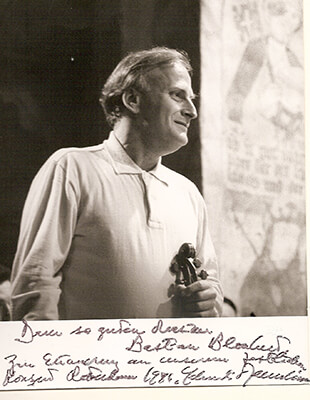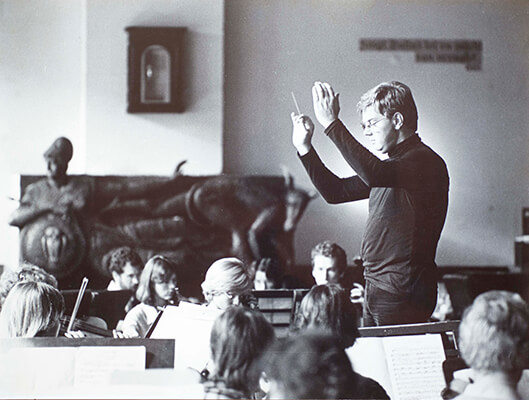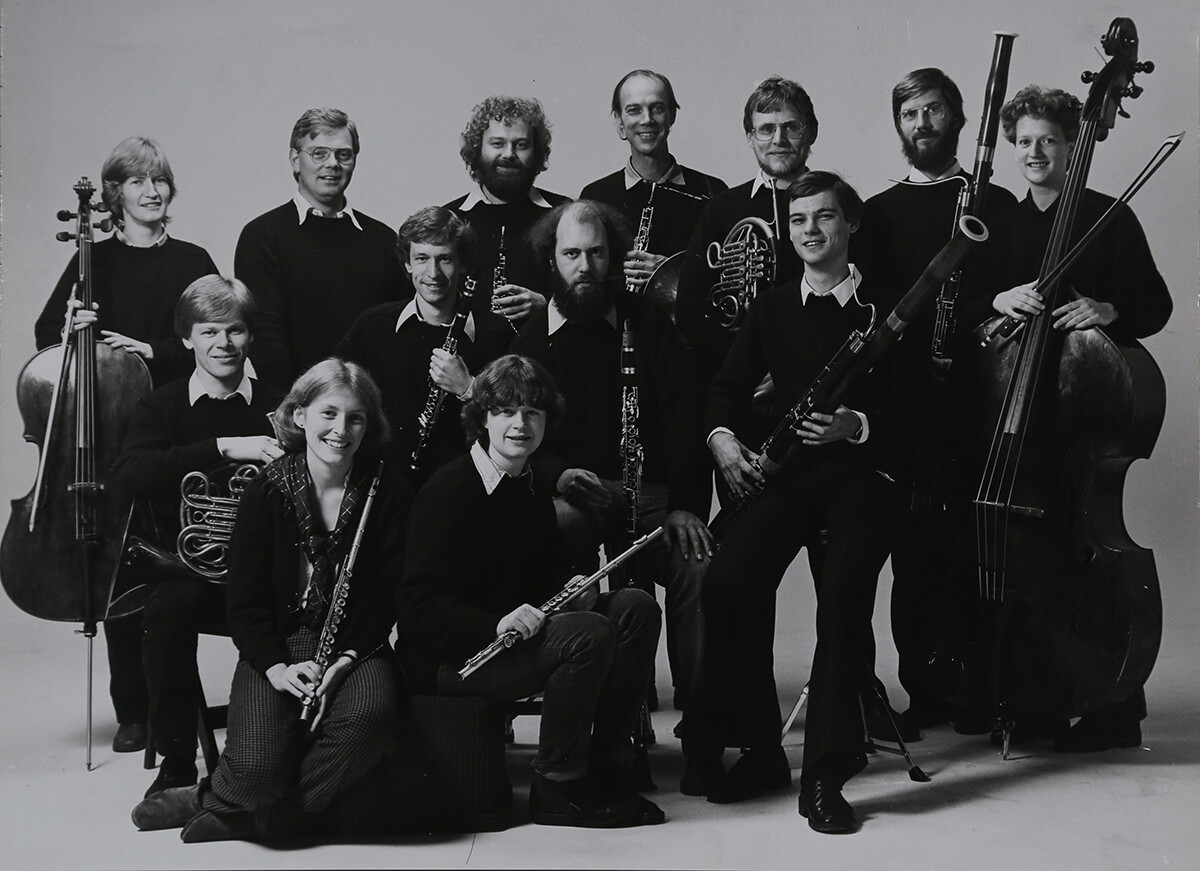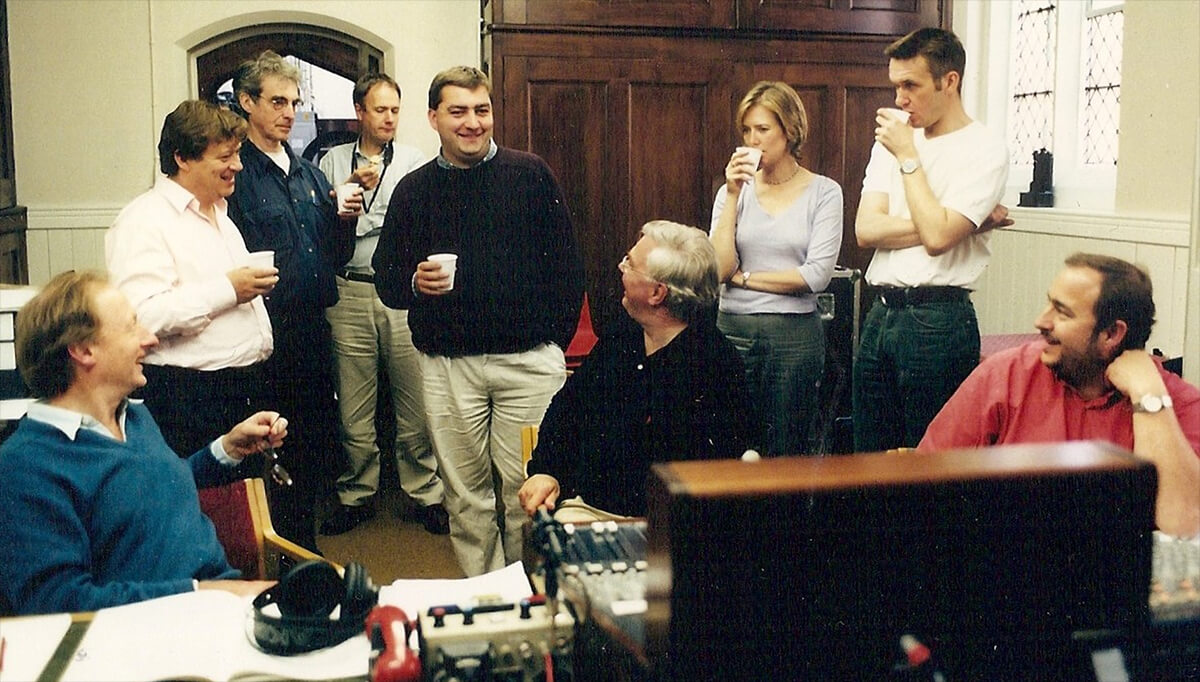CONDUCTING
In the 1970s and early 1980s I conducted many community orchestras. My professional debut with the Utrecht Symphony Orchestra in 1978 was followed by engagements in The Netherlands.
Photograph by tejo ringers
CONDUCTING
In the 1970s and early 1980s I conducted many community orchestras. My professional debut with the Utrecht Symphony Orchestra in 1978 was followed by engagements in The Netherlands, e.g. with the Percussion Group The Hague, with whom I appeared at festivals of contemporary music in the Netherlands and Austria that same year.
In 1974 I became the conductor of one of the university orchestras in Leiden, the Sempre Crescendo Society of 1831. Here I was able to perform highly varied repertoire and accompanied a number of renowned soloists, Yehudi Menuhin among them.


This position enabled me to programme a broader scope of music, as I also ran a madrigal choir and had a separate wind ensemble at my disposal, the latter group bringing me into contact with the phenomenon of Harmoniemusik, the classical genre for small wind band (six and more instruments).
In 1979 I became co-founder, Artistic Director and conductor of the Oktopus Wind Ensemble in The Hague.

Front row: Evelien Hagen (l) and Marion Moonen; second row (from left to right): Kees van Vliet, Fred Ruoff, Hans Witteman and Erik Reinders; back row (from left to right) Tineke Molenaar, Bastiaan Blomhert, Peter le Feber, Otto Bentinck, Willem Notenboom, Peter de Wit and Elsje Fokkelman.
This activity brought me unexpectedly, but most certainly, into the world of Harmoniemusik and its rich history and repertoire, which was (and still is) a young field in both performance and musicological terms: I was thus able to combine my performing skills with my musicological background.
Working with the Oktopus Wind Ensemble engendered a kind of artistic flowering on my part. Consequently, I visited many (mostly Central-European) historical collections to ascertain the extant repertoire and if this could, or even should, be performed again. Research into Harmoniemusik and preparation of editions has become a more or less permanent occupation.
I made, what might be seen as the most important Mozart discovery of the 20th Century, his own Harmoniemusik of Die Entführung aus dem Serail, long believed to have been lost. (see: Donaueschinger Harmoniemusik elsewhere on this website).
My activity as editor eventually would lead to the establishment of a modest publishing company under the name of Floricor Editions.
Along with editions of „newly“ discovered music, I arranged much repertoire for the school concerts given by Oktopus, e.g. Poulenc’s L’histoire de Babar. In 1981 the Holland Festival invited us to realize my idea of staging Mozart’s Zauberflöte as a mime performance accompanied by a Harmoniemusik of the opera. For this production I composed a complete wind version of the opera. This production (in cooperation with The Netherlands Pantomime Theatre Rob van Reijn) remained in the repertoire for three years and enjoyed some 30 performances throughout The Netherlands and Germany.
In the early 1990s I led the Amsterdam Wind Ensemble, with whom I recorded premieres of works by Haydn, Mozart, Poulenc and Schmitt. We toured Spain and Japan in 1994.
After 1985 my conducting activities were almost exclusively devoted to Harmoniemusik and I conducted wind ensembles all over the world. They included concerts with the Chamber Music Hawaii (Honolulu, 1999), the Ensemble Philidor (Paris, 2001), the wind players of the Russian National Orchestra (Moscow, 2006), the Helicon Ensemble (Maastricht, 2007) and the RadioBlazersEnsemble (Hilversum, 2008).
Apart from concert performances I spent a considerable amount of time in recording studios. In 1982 the Oktopus Wind Ensemble and I recorded for the Globe label the highlights of my Zauberflöte arrangement. With the Amadeus Winds (New York, 1988) I recorded Mozart’s Donaueschingen Harmoniemusik of the Abduction from the Seraglio KV 384 for Decca. A recording of the three Krommer Partitas Op. 45 for the Chandos label (London, 2001) was made with the Wind Ensemble of the Academy of St. Martin in the Fields. We later made a concert tour to The Netherlands and the Czeck Republic.
In 2005 the Wind Ensemble of the Academy of St. Martin in the Fields and I cooperated again, this time in a new recording of Mozart’s Donaueschingen Harmoniemusik of the Abduction from the Seraglio KV 384 for the PentaTone label. Finally in 2011, I recorded Frank Martin’s Totentanz zu Basel im Jahre 1943 with the ARMAB Symphonic Wind Orchestra in Branca (Portugal).

